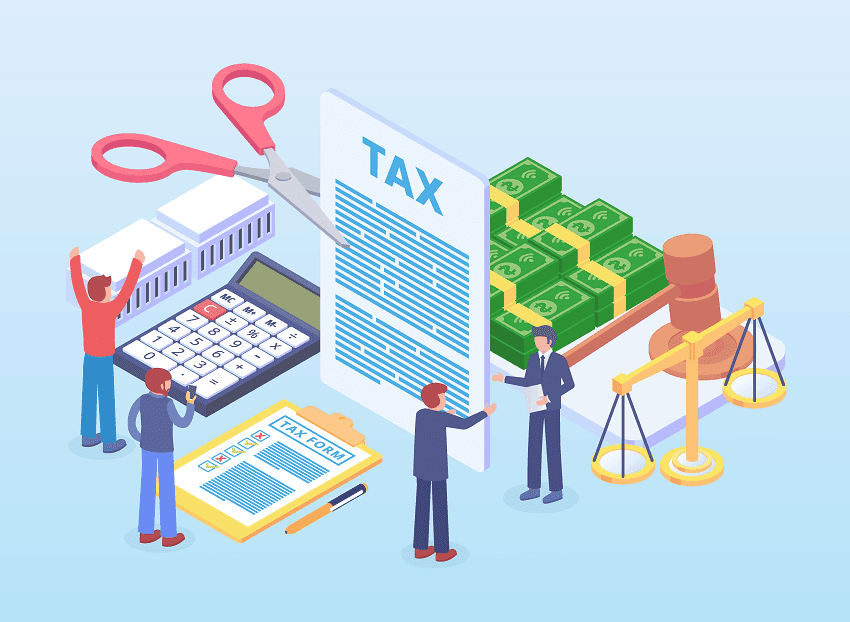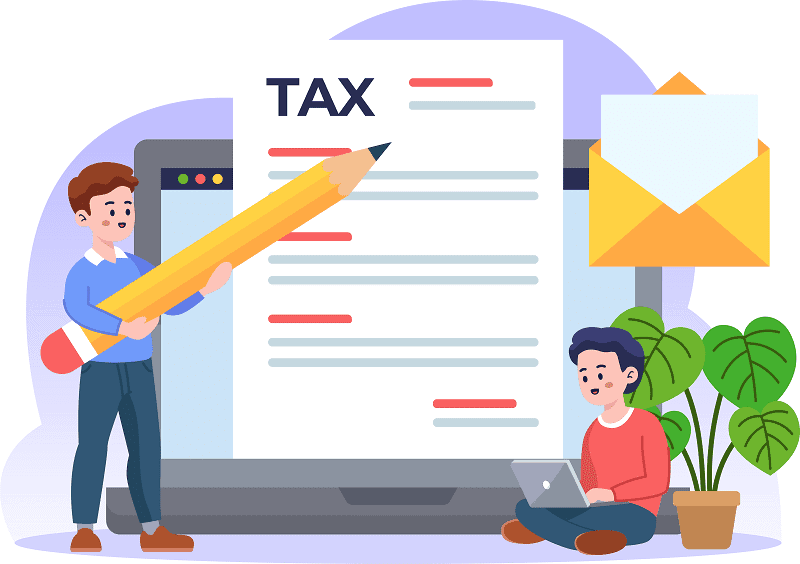Property investors can save thousands of dollars by simply understanding the capital gains tax property six-year rule.
Additionally, you can save money by understanding capital gains tax (CGT) consequences before you rent out an investment property.
Here’s some insight into the steps that will guarantee you’re not liable for any CGT when you decide to sell your property.
What is Capital Gains Tax? (CGT)
The Australian Taxation Office explains that when you sell your property, the difference between how much you paid for it and how much you sold it for is known as a capital gain; or if you lost money, a capital loss.
Any profit on the sale of real estate assets is considered a capital gain and needs to be declared on your annual income tax return.
But how can you ensure your property is exempt from capital gains tax?
Capital Gains Tax Exemptions or Discounts
There are several ways in which you can avoid capital gains tax.
The first one is the main residence exemption. Main residence exemption allows homeowners to avoid paying capital gains tax if their property is their principal place of residence (PPOR).
Other exemptions include:
- The capital gains tax property six-year rule – see below.
- The 50% CGT discount – if you’ve held your property for 12 months or more before the CGT event, i.e. selling the property.
- The six-month rule – this is when the ATO allows you to hold two PPOR if a new home is acquired before a purchaser disposes of the old one. Both properties will be treated as PPOR for up to six months in this case.
What is a Principal Place of Residence (PPOR)?
Before delving into the capital gains tax property six-year rule, it’s important to understand what constitutes a principal place of residence.
As a general rule, main residence exemption disallows capital gains tax payable on the sale of the property you regard as your family home, which is known as your principal place of residence. This is because you don’t generate an income from living in your own home.
There are a few criteria that need to be met for your home to be considered your main residence or PPOR. These include, but are not limited to:
- it’s the main residence where you and your family have resided for the full duration that you have owned it;
- it’s the main residence where your belongings are;
- it’s the main address used to receive your postal mail
- it’s the main address on your driver’s licence and the electoral roll; and
- it’s the main residence where all the connected utilities are in your name.
According to the ATO, the preferred proof is the address where your utility bills are sent which is generally sent every 3 months.
For investors who do not necessarily plan on residing in their property investment, it is worthwhile knowing about the capital gains tax property six-year rule before renting it out straight away!
What is the CGT Six-Year Rule?
The capital gains tax property six-year rule allows you to use your property investment as if it was your principal place of residence for up to six years whilst you rent it out.
This means that you would be able to sell the property within the six-year period and be exempt from paying capital gains tax just as you would if you sold the house considered your main residence.
The six-year absence rule exists because there are many reasons why you may not be living in your property for some time. The Australian Tax Office recognises that there are various unique circumstances beyond the control of the property owner.
The capital gains tax property six-year absence rule will also appeal to homeowners wanting to make some additional money for the period that they are not able to reside in their home — all without prompting the need to pay CGT upon its eventual sale.
Example:
Michael purchased a house in Brisbane and has lived in it for the past four years. It has been his official main residence for the entire period that he has owned it.
Since then, he has been offered work placement in Perth for a two-year duration. He accepted the placement and moved to Perth and opted to live with his cousin. As a result, he did not treat any other home as his main residence. In the meantime, he has decided to rent out his own residence while he is away, to bring in some extra revenue.
After two years, he decided to move to Perth and sell his home in Brisbane permanently. Through the application of the capital gains tax property six-year rule, he was able to sell the property and claim the CGT exemption.
Thanks to the six-year absence rule, he was not required to pay tax for capital gains.
When Do You Pay Capital Gains Tax on Investment Property?
Capital gains tax is paid when a CGT event occurs, such as the property being sold.
It’s important to understand which financial year this occurs in to take advantage of the base tax outcome. For those making capital losses, the amount can be carried forward to offset future capital gains but cannot be used to reduce assessable income.
There are, of course, conditions that you need to be aware of that come with using the capital gains tax property six-year rule:
- First off, you will not be able to consider another property as your main residence for the same period unless applying the rule.
- Secondly, for the rule to be applicable, it must be first considered your main residence before being rented out. Immediately using it as an investment property will disqualify you from the capital gains tax property six-year rule.
What If You Are Away From Your PPOR More Than Once?
Each period that you do not reside in your PPOR and rent out is handled as an individual case. This means that the capital gains tax property six-year rule restarts each time you move back into the home.
Provided that each interim period that you are away does not surpass the six years, then you can avoid paying the capital gains tax.
Currently, there is no fixed constraint on the number of times you can make use of this exemption.
Example:
Jessica owns a house in Sydney and has lived in it as her main residence between 2013 and 2016. She has, however, since been employed at a new company in Melbourne. As a result, she decided to move and rent her property out.
In 2019 she decided to move back to her home in Sydney and make it her main residence once more while she freelanced. Not long after, she managed to get another permanent job, in Brisbane this time.
According to the capital gains tax property 6-year rule, she can move interstate again and access another absence period up to six years.
In 2020, Jessica decided to sell her property in Sydney so that she can permanently reside in Brisbane. She qualified for the main residence exemption and was not required to pay capital gain tax.
You Didn’t Treat Your Property as Your Main Residence When You First Purchased It… So How Do You Reduce Your Capital Gains Tax Payable?
If you didn’t know about the capital gains tax property six-year rule, your next best option is to take advantage of CGT discounts.
One way to reduce your CGT when selling your investment property is if you hold the property in your name for more than one year. This will entitle you to a 50% discount on your capital gains tax payable when you sell the property.
If you make the decision not to sell the PPOR residence after six years of renting it out, the ‘market value rule’ will be applicable to help potentially reduce your capital gains.
This means that when you eventually decide to sell the property, the market value of the home will be considered at the time you first decided to rent it out.
In this case, you will qualify for a partial exemption, which means that the full exemption will be reduced commencing from the period when the property was no longer considered your main residence.
It’s essential that investors maximise their return and reduce the capital gain tax on their investment properties when they decide to sell – especially when there has been some form of renovations.
For every capital gains tax event that happens to their investment property, they will need to work out their capital gain or a capital loss.
For many, this can be a daunting task. That’s when a Capital Gains Tax Report comes in handy.
Reducing Capital Gains Tax
Suppose the circumstances surrounding an investment property don’t meet the criteria for the full concessions and exemptions offered by the Australian Taxation Office. In that case, there are a few ways in which property investors can reduce the amount of capital gains they have to pay.
One of the most significant ways an investor can reduce their capital gains tax is through increasing their cost base with their expenses.
According to the ATO, when you sell your property, the difference between how much you paid for it and how much you sold it is known as capital gains.
So, a capital gain = selling price – cost base.
The cost base = purchase price + expenses (see below) – (grants + depreciation).

Expenses That Can be Added to the Cost Base
The expenses that investors can add to a cost base include, but are not limited to:
- Incidental costs such as your rental advertisement fees, legal fees and stamp duty.
- Ownership costs such as those incurred when searching and inspecting for properties.
- Title costs such as the legal fees incurred when organising and defending the title on the property.
- Improvement costs should you decide to replace the flooring or install a deck, for example.
By adding expenses to the property’s cost base, investors can reduce the capital gains they declare on their annual income tax return.
This could lead to a reduction in the amount of CGT required to pay on the sale of the investment property.
Capital Gains Reduction Report
The best way to determine what expenses investors can add to their cost base and how they can reduce the amount of capital gains they declare would be to have a quantity surveyor draw up a Capital Gains Reduction Report.
A Capital Gains Report essentially helps streamline the reduction process by factoring in all capital expenses for a property.
Detailing these expenses will give investors an accurate picture of the cost base of the property’s total value, which will ultimately help reduce the amount of CGT payable.
The scenario below shows the benefit of a capital gain reduction report prepared by Duo Tax Quantity Surveyors and the ramification of not including the capital improvements.

Example: Sale of a rental property with Capital gain Reduction Report
a. Cost Base Unindexed:
| Purchase price of the property | $550,000 |
Plus pest and building inspections, stamp duty and solicitors fees on the purchase of the property | $50,000 |
| Plus capital Improvements (calculated by Duo Tax Quantity Surveyors) | $150,746 |
| Plus real estate agent fees and solicitors fees on the sale of the property | $18,500 |
| Cost base unindexed | $769,246 |
b. Capital Gain Calculation:
| Proceeds from the sale of the property | $850,000 |
| Less cost base unindexed (as calculated above) | ($769,246) |
| Total current year capital gains | $80,754 |
Now let’s look at the same example, but without the capital gain reduction report included.
Example: Sale of a rental property without Capital Gain Reduction Report
a. Cost Base Unindexed:
| Purchase price of the property | $550,000 |
| Plus pest and building inspections, stamp duty and solicitors fees on the purchase of the property | $50,000 |
| Plus real estate agent fees and solicitors fees on the sale of the property | $18,500 |
| Cost base unindexed | $618,500 |
b. Capital Gain Calculation:
| Proceeds from the sale of the property | $850,000 |
| Less cost base unindexed (as calculated above) | ($618,500) |
| Total current year capital gains | $231,500 |
Key Takeaways
If you are selling a property, you should know that any profit made from the sale is potentially considered a capital gain and therefore subject to capital gains tax.
Suppose investors aren’t able to avoid capital gains tax. In that case, they can substantially reduce the amount of CGT they pay by having one of our quantity surveyors draw up a Capital Gains Reduction Report for their property.
It’s also worthwhile noting that tax assessments are not set-in-stone; the ATO allows an amendment period of two years from the notice of assessment.
This means that if you have already lodged your tax and didn’t include capital improvements, you could still benefit from the Capital Gains Reduction Report for two years after you lodged your return.
To get the best possible advice on your CGT options, and inquire about our Capital Gains Report, get in touch with our property tax specialists today.
See also:

Ready to get started?
Talk to one of our friendly property experts to get a free quote or more Information.











